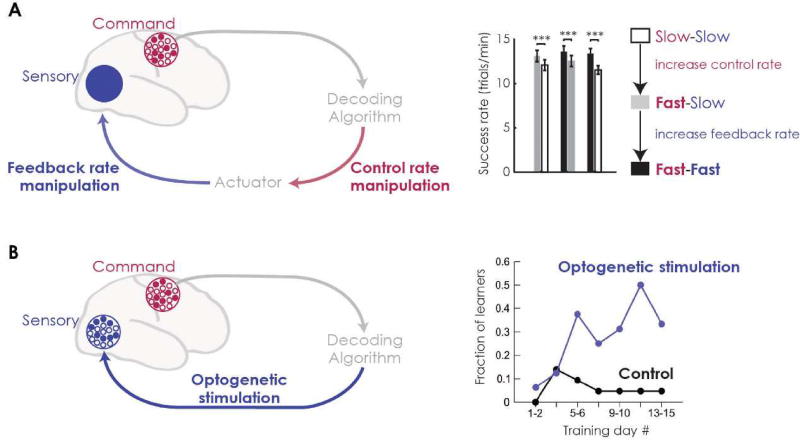Figure 2.
Recent BMI studies probe learning and control by manipulating the information streams in BMI. (a) Shanechi et al. [36]** used BMIs to manipulate the rates of the sensory-motor loop (left). BMIs allowed them to independently manipulate both the rate at which motor commands moved the actuator (“control rate”, red) and the rate of feedback (blue). They showed that BMI performance depends on both rates separately (right). Performance improved with faster control rates, even when subjects received slower feedback. Increasing the feedback rate then further improved performance. These results suggest that BMI may involve multiple control strategies—both predictive feed-forward control and feedback-based control. (b) Prsa et al. [25]** developed a BMI where decoder output drove optogenetic stimulation (channelrhodopsin, ChR2). This creates a system where both the command and feedback nodes can be precisely defined (left). They show that, with training, mice can learn to modulate command node activity to achieve rewards with optogenetic stimulation as their only form of sensory feedback (right). Control mice lacking ChR2 were unable to learn the task, demonstrating the necessity of this sensory feedback for learning the BMI task.

